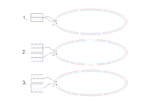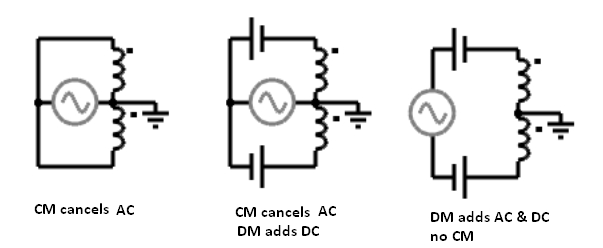designteam
Junior Member level 1
I would like to know what the electric and magnetic field topology is for the following conditions relating to parallel conductors, "A" and "B".
All signals are identical except for phase and point of connection.
A1 __________________ A2
B1 __________________ B2
1. In phase signals applied to A1 and B2, A2 and B1 grounded.
2. Anti-phase signals applied to A1 and B2, A2 and B1 grounded.
Same as above but with one signal offset from the other by 100% of its peak voltage.
I am looking for a visual description of what the resulting E and B fields would look like along the lateral plane of interaction.
All signals are identical except for phase and point of connection.
A1 __________________ A2
B1 __________________ B2
1. In phase signals applied to A1 and B2, A2 and B1 grounded.
2. Anti-phase signals applied to A1 and B2, A2 and B1 grounded.
Same as above but with one signal offset from the other by 100% of its peak voltage.
I am looking for a visual description of what the resulting E and B fields would look like along the lateral plane of interaction.

